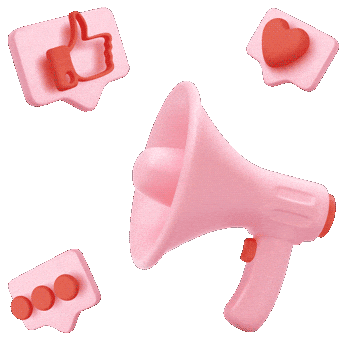TikTok vs Instagram: Which One Is Better For Business and Selling Products

You’ve heard of TikTok, and you’ve heard of Instagram. Perhaps you’ve already used either platform to market your business, either on your profile with your own content, or you’ve already used an influencer to help promote your products.
The question is, which social media is better for promoting and selling products or services? We will narrow down the basics to the core considerations you need to be thinking about. In other words, here’s how you decide whether you promote on Instagram or TikTok depending on your audience and product.
The Hard Stats
Facts are everything when it comes to making business decisions, and the same logic applies here. Here are some of the key stats to think about.
| TikTok | Conclusion | ||
| Number of Daily Users | 500 million+ | 600 Million+ | Each platform has an absolutely massive audience for you to tap into. These are users that have the potential to see your content every single day and can engage with your brand and the content you’re producing. |
| Average Time Spent on the App | 30 Minutes | 52 Minutes | People are spending more time on the TikTok app every day than they are on Instagram. There are more chances for you to grab their attention with your content in Tik Tok. |
| Downloads in Q1 2020 | 100 million + | 300 million+ | While Instagram app downloads remain consistent, TikTok is soaring in popularity, and is being downloaded more and more every single quarter. |
| Marketers Who Promote on Platform | 33% | 4% | While a large chunk of marketers use Instagram, only a tiny percentage currently use TikTok, meaning there’s currently less competition, and more opportunities to be the best. |
| Average Age Range of User | 70% of users are under 34 years old | 41% are between 16-24 | While both apps have primarily young audiences, TikTok has a much younger audience with young teenagers, whereas Instagram has more active users in their mid-twenties (mainly millennials). Regardless, both apps cater to the young. |
So, what does this all mean? The hard and fast of all this is that Instagram is an established and reputable social media platform that’s great to market on. There are other amazing stats that Instagram gets around 130 million taps a month through their Shopping feature and business Stories have an 86% completion rate.
This basically means that 86% of users who click a brand story on Instagram will see it through to the end.
However, TikTok is growing at an unprecedented rate, around 3x as fast as Instagram as of Q1 2020, where the platform saw a jump of 115 million users at the beginning of the COVID-19 pandemic, which is just insane for a social media app.
Putting all of this together, you – the marketer, business owner or a publisher – need to make a decision. Think about which platform best suits your needs, and which platform has the audience for you. While both are pretty good when it comes to getting customers, you still need to streamline your efforts for the best results.
If you have a younger customer base, then TikTok is definitely for you. However, perhaps you’ve tried Instagram, but had no luck. With TikTok being so fresh and new still (only 4% of marketers are using the app), perhaps this is your chance to find some untapped success.
It’s true that Instagram gets more clicks through and more brand engagement. But with TikTok recently partnering with retail giants Shopify and creating a whole new range of marketing tools, it’s clear that TikTok is focusing on making their marketing efforts more successful and more fruitful for businesses. Though, Instagram can still help you gain mid-twenties users and millennials, if your target audience is them.
To help you make your decision, let’s take you through strategies you can implement on both platforms, so you can further see which one could be best for you.
The TikTok Strategy
Using the stats above, we can narrow down that TikTok has a younger audience. They’re not on the app to look at ads but instead want to engage with entertaining content. Users like hashtag challenges, tutorials, viral content, and laughs (we’ll visit this shortly).
What makes TikTok interesting as a content platform is just how invested its users are in the app and its content. MediaUpdate did the research and found some interesting points:
- Users access content at all hours of the day, every day of the week
- Users will turn off distractions, like TVs and computers, to solely focus on TikTok content
- TikTok users will frequently return to hashtags to review new content on trends they care about
What do we take away from this? TikTok is, quite simply, immersive.
Imagine turning off your TV so you can browse Instagram with more of your attention. It just doesn’t happen. Yet, with TikTok, it does, and it’s happening all the time, at all hours of the day.
This means that if your brand is choosing to use TikTok to market on, you need to do one key thing: create content that fits the trends and remains practical and entertaining as standalone content.
Mark McDonald, a business writer at Australia2Write and Write My X, gives us his take.
“Take a look at brands like GymShark and Chipotle, massive brands that are using TikTok in a very successful way. All the content these brands post are great as videos on their own, but market themselves at the same time.”
The Chipotle campaign Mark is referring to is the 2019 campaign where Chipotle asked users to get involved with their #GuacDance challenge, in which users danced to the Guacamole Song by Dr Jean.

As a result, Chipotle saw an 800,000 unit increase in orders (requiring an extra 75,000 cases of stock) and became TikTok’s highest performing challenge in the US, receiving over 250,000 video submissions and 430 million views in just six days.
This was all to celebrate National Avocado Day. So, Chipotle took a national celebration day relevant to their company, created a challenge for users to create content and submit it, and then profited off the resulting sales.
Take Gymshark as well. The company creates workout at home tutorials and hashtag challenges that are free for people to follow and contain the products that people can buy if they wish. It’s a win-win.
Gymshark created the #gymsharkchallenge where people dress up in Gymshark clothing and record themselves, thus a huge amount of trending Gymshark content, boosting their brand awareness, making sales, engaging with their community, and creating great standalone content.
Gymshark has done it perfectly because the content created fits the bill of what people are looking for on TikTok, which is short, entertaining content that captivates for a few seconds, but is bingeable for hours.
This is what you need to achieve in your own content. If you’re posting classic, traditionally formatted ads that basically say ‘hey, this is our company, buy from us.’, you’re not going to be successful in your efforts.
The TikTok Strategy Checklist
- Create genuine content first and foremost, rather than go generic
- Be fun and engaging. Serious content doesn’t really work here
- Make content that can be easily replicated by other users, go viral
- Jump on trends and popular culture
- Find interesting dances, moves, or music that TikToks can be created to that stand out from other videos
- Create hashtag movements that users can get involved in
To conclude, when posting on TikTok, you need to be thinking about creating actual content that users can engage with first, and marketing basically comes second.
The Instagram Strategy
While TikTok is all about the content, Instagram, while still content-based, is more open to traditional forms of marketing. You can post a story saying ‘hey, look at this new line of products we’ve created. Go check them out’, and people will respond and engage with this kind of content, which we’ll refer to as a more ‘direct’ form of marketing.
So, how do you market on Instagram?
First, you need an audience. Whereas TikToks can go viral, so you don’t actually need many followers to go viral. There people are more engaged with the hashtags themselves and top users, and followers come second when people find the content they like.
However, with Instagram your main reach when posting new content will be to people who are already following your content and are interested in what you have to say. You need to focus on building your audience first, and not buying a load of followers (which doesn’t work by the way). You should attract people who will actively engage in your page.
This means posting to your page regularly (once every other day is a great place to start), and uploading to your story with the same frequency. You can collaborate with other creators and businesses in your niche, and promote your posts using the in-app settings (just make sure your Instagram account is a business account). Read more about advertising on Instagram here.
Also, you can promote your Instagram content with Ads Manager.
So, you’ve got people coming to your page and they’re following you. Now what?
Well, you need to create content that’s visually attractive that relates to your products, and this is in addition to the content you’re already posting.
As a rule of thumb: you need 80% of your content to be genuine (original) content, and the other 20% can be promotional. If you’re constantly bombarding people with promotional content, they’ll be put off since you’ve being way too forceful. Find the balance.” shares Tina Harper, a marketer at Britstudent and PhDKingdom.
The key thing to remember with IG content is the content needs to be high quality and visually attractive. Your own content can be whatever you want, because you’ll need to find the voice of your brand, and then your promotional content needs to remain consistent with this voice.
You have a lot of options.
First, take a look at Gwen Stefani’s IG page. She’s a singer and musician who will promote her albums for sales. There’s a lot of high-quality content, backstage, behind the scenes kind of imagery, and then this is sprinkled with promotional content for her new album.
Actor Matthew McConaughey, an actor who released a new book Greenlights in 2021, has a very similar account and way of posting. By creating a video message on Twitter, which is then shared on his Instagram. And so far, his book promotion tactics are working.
However, these are two individuals posting, so what about brands? Well, you look at any brand, from National Geographic and Starbucks to Nike and Twitch, you’ll notice one thing in common, and that’s that all the brands share the stories of individuals. These brands aren’t marketed as faceless brands, but rather focus on personal stories that people then indirectly engage with the company through.
See the similarities in these two posts?
Both are posts with personal stories and focus on individuals. They are relatable and connectable to their audiences.
Now, when you’re creating this kind of content, you can start promoting yourself and your products. The best way to do this is to make a standard post, and then have a call to action that redirects people to a link you place in your profile bio.
However, this is typically too many steps, so instead you can promote on Instagram Story. If you’re selling, you can simply add a Shop Sticker that people can click on that will go straight through to your product page (hold down the screen and apply like any normal sticker).
If you have over 10,000 followers, you can add the Swipe Up option to any story simply by taking your image and then tapping the Link icon at the top of the screen to paste in any link you want.
The Instagram Strategy Checklist
- Content needs to be personal and relatable, not from a faceless business
- Follow the 80/20 rule when it comes to posting promotional content
- Cut out additional steps so people can buy quickly without too much tapping
- Utilize all Instagram’s posting features (i.e. video, IG Live, etc.)
- Focus on building your audience
- Your content needs to be high-quality and well-produced
Both in TikTok and Instagram, you need to make sure you’re being inspired by others and not emulating them. Find your own voice in order to stand out from the crowd.
Author — Michael Dehoyos. He is a content marketer and editor at Coursework Help and Write My Thesis. Also, he is a writer at Origin Writings.










Thanks thanks carrefoursa